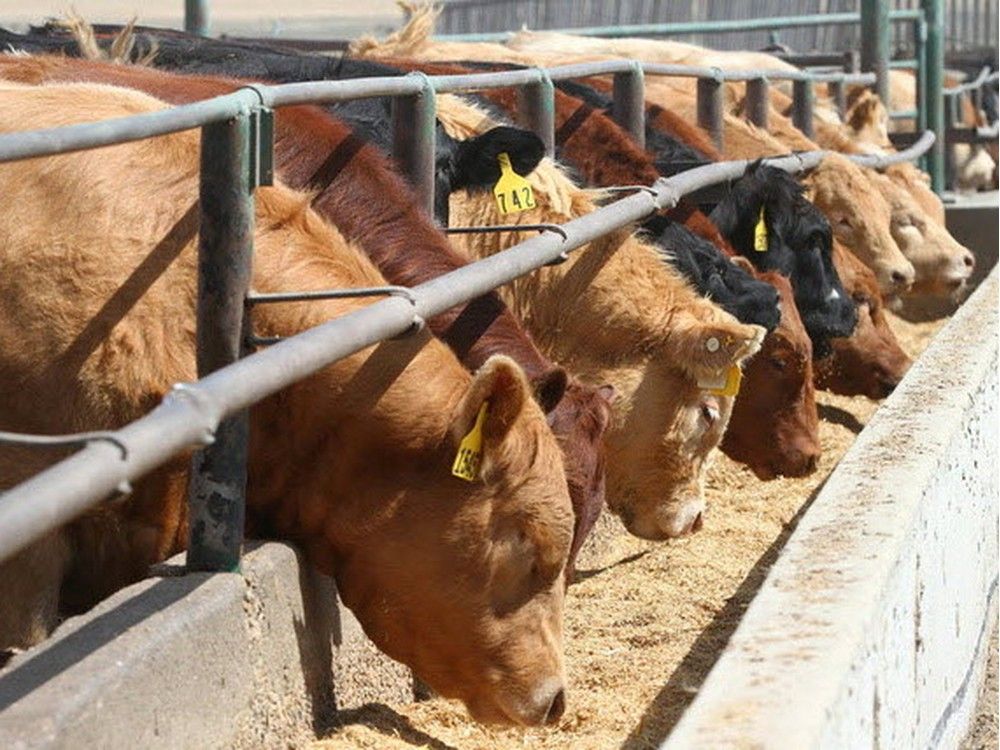
Amid the general upward trend in Canadian grocery prices, meat shopping in Canada has become more challenging.
However, while the price of most beef products has risen, pork prices have dropped, according to the latest
on monthly average prices for selected food products.
Retail
an average of 10-12 per cent in early 2025, with further moderate increases expected throughout the year.
Causes of rising beef prices
This is based on several interconnected factors. First is the
restricted supply of beef cattle
. Drought in western Canada and the U.S. has reduced cattle herds, leading to a smaller supply of beef and higher prices.
Drought has also driven up the
such as corn and barley, which are among the principal costs in cattle production. That contrasts with
(corn and barley), which are expected to remain below average in 2025. That’s good for pork producers as it will support improved margins for hog farmers.
Meanwhile, international demand for Canadian beef, especially in Asia, has been robust, keeping domestic prices high.
In contrast, pork prices in Canada are falling.
Tariffs hurting pork producers
The
loom for Canadian pork exports. If tariffs take effect, Canadian
pork exports to the U.S. could decline sharply,
forcing more pork into the domestic market and pushing prices further down. Retail price-estimates
in retail pork prices if U.S. tariffs are enacted.
Meanwhile, exports to markets like Japan, Mexico, and South Korea are growing, but the loss of the Chinese market due to Canada’s tariff battle with China has also increased the risk of domestic oversupply. In March, China imposed a 100 per cent tariff on canola oil, oil cakes and pea imports, and a 25 per cent duty on Canadian aquatic products and pork.
Decreased pork consumption
Meanwhile, Canadian pork producers have been coping with decreased domestic consumption — a decline of about 12 per cent year-over-year in 2024. Consumers shifted to other proteins when pork prices were higher.
Pork farmers are also coping with recent research that indicates
beef consumers are less likely to reduce beef purchase
and switch to pork, even when beef prices rise. The research shows even substantial price hikes in beef result in only modest increases in demand for pork or chicken.
Conversely,
many pork buyers will reduce consumption
or switch to alternatives if pork prices rise, especially in lower-income or more price-sensitive demographics.
Here are some of the price changes in beef and pork noted by StatsCan:
Beef stewing cuts
2024: $16.68/kg, 2025: $19.33/kg
Beef striploin cuts
2024: $27.59/kg, 2025: $35/kg
Beef top sirloin cuts
2024: $18.57/kg, 2025: $22.06/kg
Beef rib cuts
2024: $23.80/kg, 2025: $39.01/kg
Ground beef
2024: $11.72/kg, 2025: $13.85/kg
Pork loin cuts
2024: $9.53/kg, 2025: $8.72/kg
Pork rib cuts
2024: $9.57/kg, 2025: $8.35/kg
Pork shoulder cuts
2024: $9.01/kg, 2025: $7.23/kg
Pork wieners
2024: $4.13/400 g, 2025: $4.07/400 g
Our website is the place for the latest breaking news, exclusive scoops, longreads and provocative commentary. Please bookmark nationalpost.com and sign up for our daily newsletter, Posted, here.
